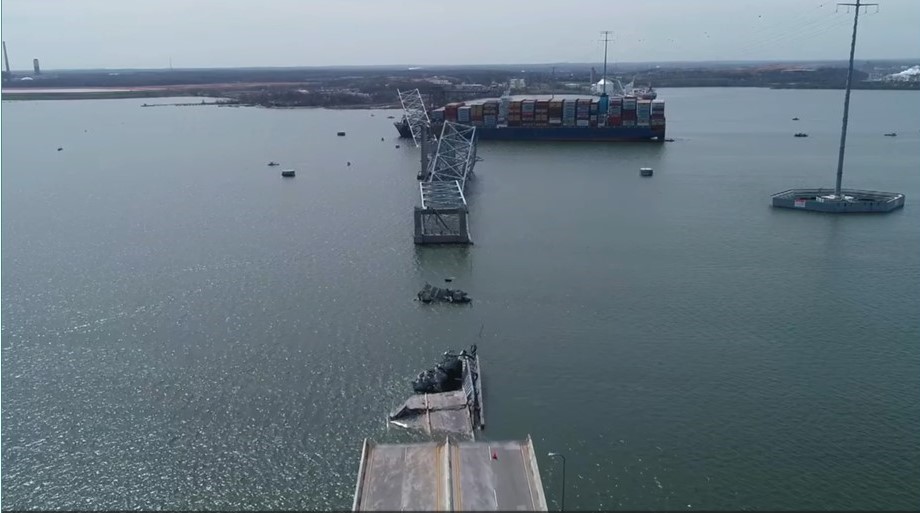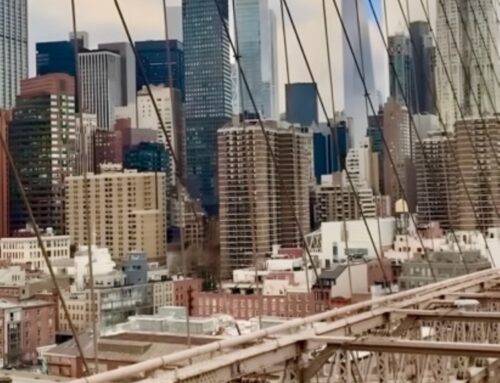Among images that cannot be unseen is the collapse of the Francis Scott Key bridge in Baltimore on March 26 this year, when it was struck by the disabled cargo ship Dali. Opened in March 1977, the bridge was three days shy of its 47th anniversary when it collapsed. With a continuous through truss design, the steel bridge and its reinforced piers certainly appeared to be indestructible. Yet, facing the 116,000-ton Dali, which was incapable of turning or stopping, seeing the bridge fall was like watching a child’s tower built of toothpicks collapse. A trite description, but so fitting.

At Industrial Wire Rope, it seems that so much of our focus and conversation is on construction. We are about creating, building, and with this, lifting, as structures go up! The on-going efforts in the Baltimore Harbor to remove debris from the accident site and eventually restore the Francis Scott Key bridge, combined have been a story about another aspect of our business: demolition.
It’s a different perspective on a huge and very visible undertaking. The aftermath of the Dali’s collision with the Francis Scott Key bridge presented some heavy lifting. Removing the debris alone makes for a story of epic engineering. In implementing meticulous and detailed plans, it’s compelling for everyone in the construction industry in general, and certainly, for us at Industrial Wire Rope. Cranes, cables, chains, and slings all have played major roles in clearing the debris from this accident.
Key Bridge Cleanup
In the Construction Dive article “Key Bridge cleanup ‘an engineering nightmare’”, Jeff Ellis, director of field operations for Crane Tech, described this project as one with seemingly no margin for error. He emphasized the necessity of thorough planning before any crane or other equipment was deployed, emphasizing “this is one of those cases where we have to take the time to do it right the first time.”
A piece of equipment central to the debris clean-up has been the largest crane on the East Coast, the Chesapeake 1000. As its name suggests, The Chesapeake 1000 is a crane that can lift 1,000 tons of debris. One of the initial challenges was that the portion of the Key Bridge which collapsed upon the Dali alone weighed between 3,000 and 4,000 tons. Described as “treacherous, colossal wreckage,” this called for massive sections of the collapsed bridge to be cut up before they could be moved. In all, an estimated 50,000 tons of mangled iron truss work, rebar, and concrete resting on the bottom of the Patapsco River comprised the clean-up project with the largest piece of debris weighing just over one million pounds (500 tons).
Also among the debris were hundreds of containers on the Dali that needed to be removed. In addition to the Chesapeake 1000, the clean-up operation involved the Ferrell, a revolving crane barge with a 200-ton lift capacity, plus two other crane barges, one with a 150-ton lift capacity and another with a 400-ton lift capacity. At one point in April, as work was getting underway, “22 colossal floating cranes worked sunrise to sunset” according to a post by the Army Corp of Engineers (Large flock of cranes nibbles at Key Bridge wreckage).

Grainy, but impressive: the hooks and chains of the Chesapeake 1000, lifting a section of the Francis Scott Key Bridge
Engineering Nightmare
The “engineering nightmare” Jeff Ellis referred to arises out of both the magnitude of the destruction and the matter of a waterborne operation. Lifting the debris with floating cranes and transferring it to salvage vessels that are also floating demands precision that can be complicated by the combination of the sheer facts of buoyancy and weight shifting on watercraft and changing sea conditions brought about by shifting currents, wind, and waves. Crews had to fight unpredictable winds aloft and choppy waves below – while performing a literal balancing act as they hoisted massive, mud-covered, waterlogged heaps of twisted steel frame and Interstate 695 onto waiting barges.
In the Army Corp of Engineers post, senior crane operator Vincent DelMaestro recalled a particularly complicated lift that involved two shifts of crane operators. The difficult lift started shortly after 6 AM, ending with a different shift at 11:30 PM. It involved a 630-ton chunk of the Key Bridge that had to be cut two pieces for final removal. The post quotes DelMaestro’s description of this lift:
“That particular piece of bridge was jammed into the mud like a knife…we designed an intricate game plan the night before, but in this business, the only sure thing is that nothing quite goes as planned. Once we lifted the piece, we couldn’t get the cutting team in a safe position. So we had to re-rig the chains to improve the balance for cutting, then we transported the two pieces to Sparrows Point in reverse order than originally planned.”
Following this amazing work clearing the debris from the Francis Scott Key Bridge collapse and reopening of the shipping channel for the Baltimore Harbor comes rebuilding the bridge. Beginning in 2025, the rebuild is expected to take three years with the bridge and the re-connection of I-695 complete in 2028, using a progressive design-build process. We’ll be watching this phase of project with keen interest as well!

